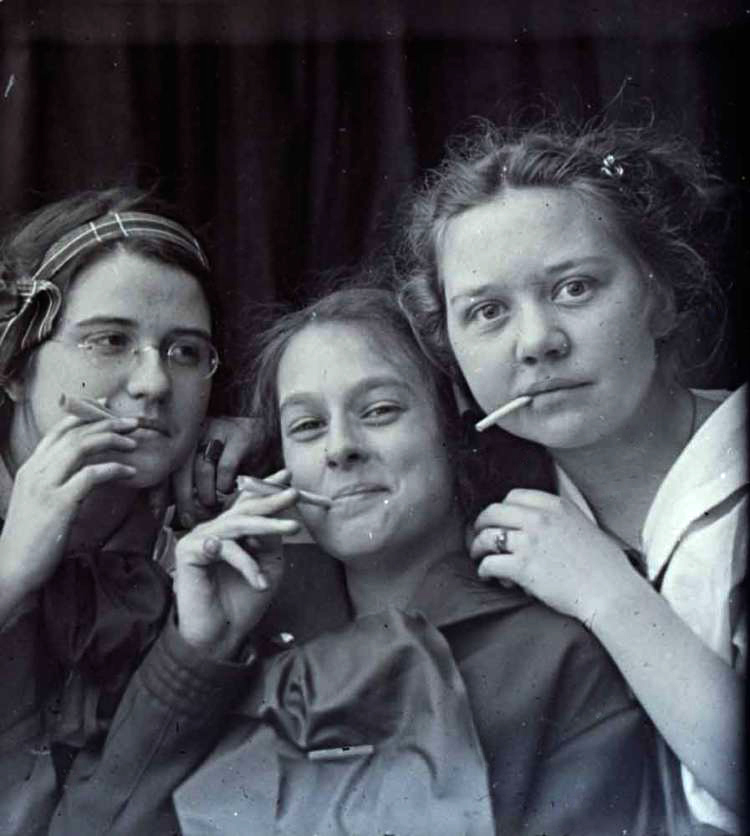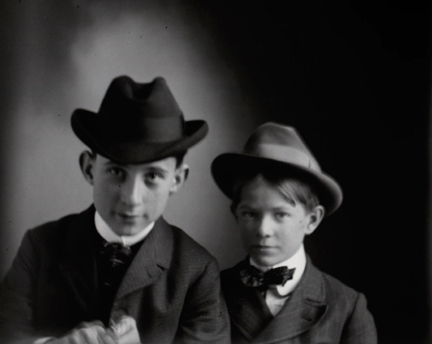In my early days as a photographer my very very first business card described me as an “itinerant photographer”, or “fotógrafo ambulante” for my Spanish speaking clientele. (It doesn’t quite have the same meaning, but it was close enough.) The crude card was a product of my own limited design skills but it did tell people what I endeavored to be. (I recently found that card and did it bring back memories!)
I certainly wasn’t the first to describe myself this way. In the late 19th and early 20th centuries there were photographers who realized that settling down in one town would probably not give them enough business upon which to thrive. Taking their services from town to town, however, just might. Then again, maybe some of them just had an itch to see what was around the next bend.
Hugh Mangum was one such photographer.
I have recently stumbled across his entire known collection of portraits, which is archived at Duke University. You can find it at the David M. Rubenstein Rare Book & Manuscript Library, Duke University. All photos by Mangum shown here are used with their permission. I’ve culled some of my favorites but there are plenty more to see at the above link, over 600 more as a matter of fact.
Mangum worked mainly in Virginia and North Carolina, making portraits of anyone who wanted one and could afford his sitting fee. He was equally welcome and popular in both white and black communities, which made him a bit of a rare bird. And for that reason his work is especially valuable. That part of the country was still very segregated but it didn’t seem to matter to him. Many African Americans were anxious to expose themselves (so to speak) to the greater community as well as have photos for their family albums. They found their man in Mangum!
One recurring theme one sees in Mangum’s work is the series of poses he would suggest to his subjects. You can see each photo in the series because he often used a novelty camera called the “Penny Picture” camera. It would actually expose a series of up to 30 photos on one glass negative, which allowed him to develop that many in one pass, rather than each photo individually. This saved the photographer hours of labor in the dark room and allowed him to crank out the work in a profitable manner. One result of this is that we can often see each and every pose he would request of his client, whether it worked or not. One in particular that stands out to me is his “hands-behind-the- head-leaning-back” pose. This invariably caused a relaxed smile and must have been a winner, especially to his subjects.
When you browse through his work, you immediately realize that he was a master at putting people at ease in a situation that was often rife with stiff formality. People had fun with him, but he could also capture them at their most serious and dignified.
I’d give a lot to be in the same room with these three (although I might not last long)! Mangum captures a spirit of fun and vivacity in this picture that was seldom seen in those days. Heaven only knows what their moms thought about it.
Sister and brother? For as much as we want to know more about these people, we simply can’t. Their names have all been lost. This is in itself a tragedy but we still have the photos, and that’s no small thing. I’ll bet some of these original prints still exist in an album somewhere, with the IDs and dates penciled in on their backs.
Mangum was born in Durham, North Carolina, in 1877, into what was reputedly a very talented family. When his family moved out into the quiet of the country Hugh, a lad of 16, took his camera and started taking pictures in the surrounding towns. He would get on a train and keep going and working until he ran out of money. In some towns he would establish a space in some store or building that he could use for his studio or darkroom and eventually built up a sizable clientele in both the white and black communities.
Perusing his images it becomes clear that he had a way with the women and it seems they had a good time with him too. He is reported to have taken over a hundred nudes but they have apparently been lost. This little known tragedy may rank with the burning of the library in Alexandria.
In 1906, he married Annie Carden, whom most folks considered the prettiest girl in East Radford, NC. He continued his successful career until 1922 when he was struck down by the great influenza epidemic that swept the country. The only treatment available at the time was whisky, which he turned down on principle. They survived and he didn’t.
To read see more of his work: Duke University Library Digital Collection
There’s also a good biography of him at the Eno River Association
[youtube https://www.youtube.com/watch?v=ul7j7inExsY]











